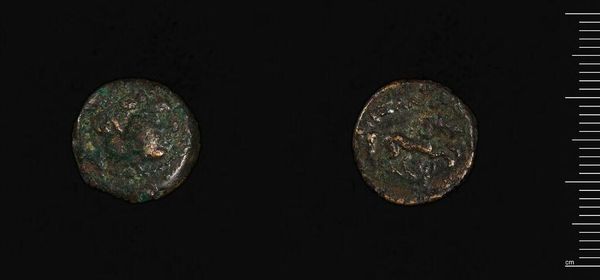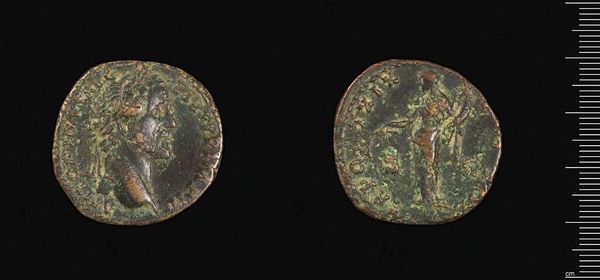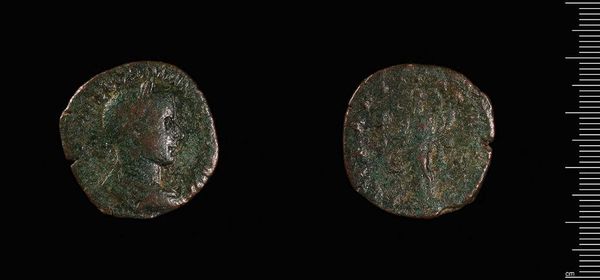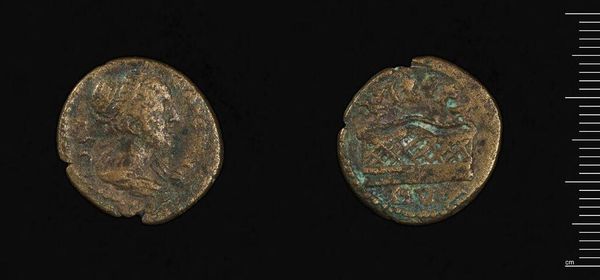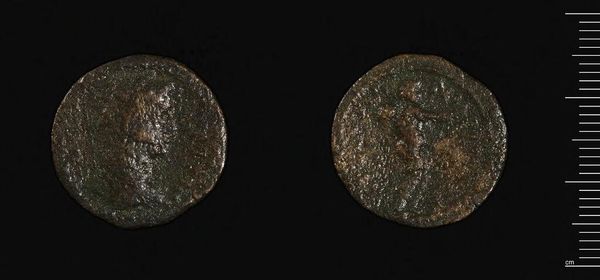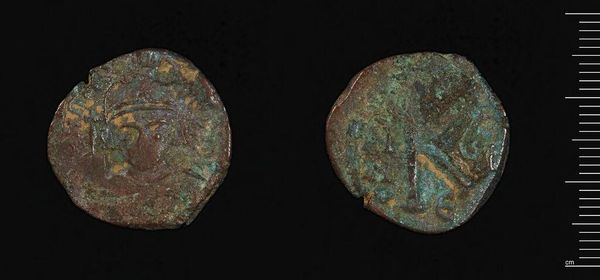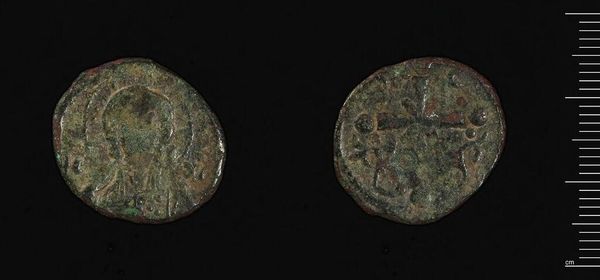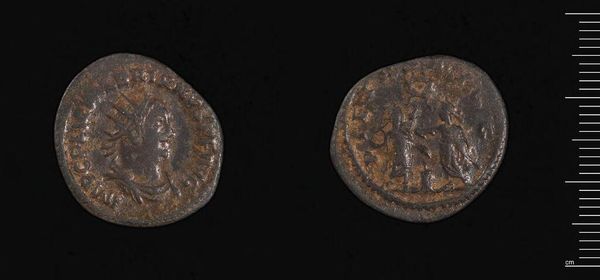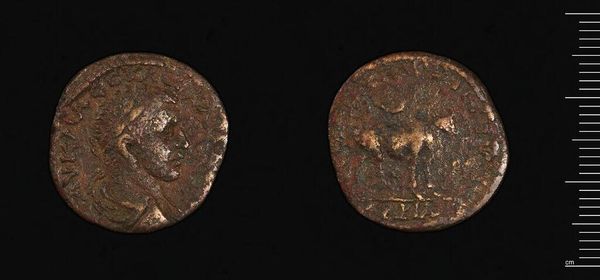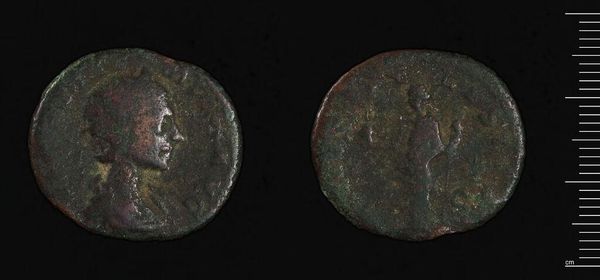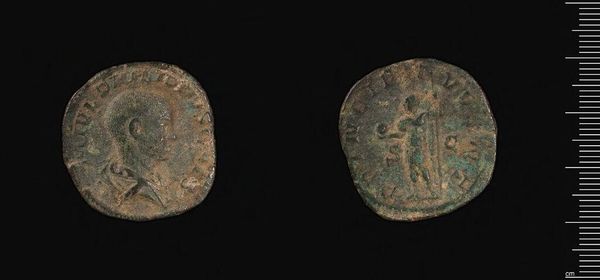
Dimensions: 14.76 g
Copyright: CC0 1.0
Curator: At first glance, it appears quite worn and weathered, almost evoking a sense of resilience, despite its condition. Editor: Indeed. We're looking at a sestertius, a bronze coin featuring Didius Julianus. He briefly reigned as Roman Emperor in 193 AD. Its weight is 14.76 grams, and it resides here at the Harvard Art Museums. Curator: That very brevity is key! The coin becomes less about Julianus, and more about power's fleeting nature, and how quickly it can be bought and sold. Editor: Absolutely. Julianus notoriously bought the emperorship at auction. This coin serves as a potent symbol of that transaction, and of the political turmoil of the time. The imagery chosen and its circulation tells us a lot about the Imperial message he wanted to convey. Curator: And that message, even centuries later, speaks volumes about the complexities of legitimacy and authority. Editor: A small object, yet a weighty reminder of the past's influence on our present. Curator: It underscores how our perception of value, be it monetary or symbolic, is always contextualized.
Comments
No comments
Be the first to comment and join the conversation on the ultimate creative platform.
